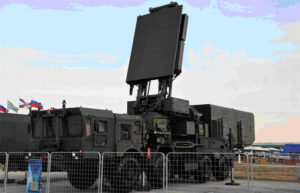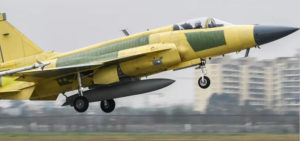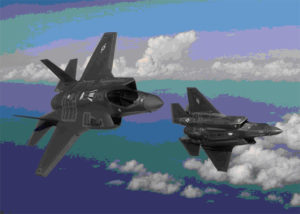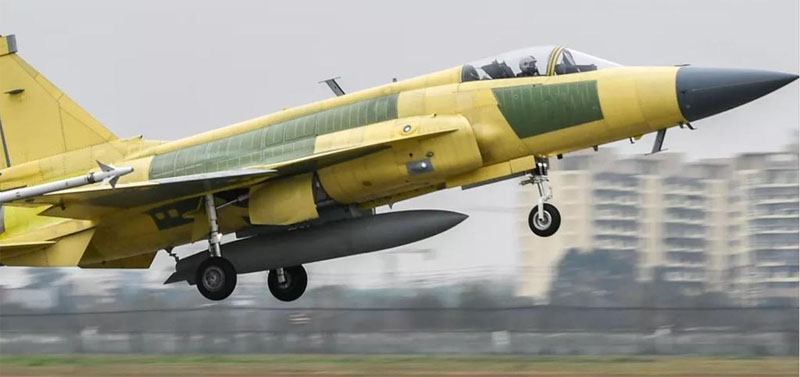Pakistan To Add 50 JF-17 Block III Fighter Jets To Its Air Force
February 7, 2022
India’s deployment of S-400 air defense systems near the Pakistan border seems to have sent Islamabad into a tizzy. Sensing a threat from the Russian-made SAMs, the Pakistan Air Force (PAF) has gone into an overdrive to enhance its capability.
Last month, some reports suggested that PAF may be looking to acquire 25 Chinese J-10C fighter jets in response to India’s acquisition of Dassault Rafales. It was actually Pakistan’s Interior Minister Sheikh Rasheed Ahmed who fueled this speculation after he announced at a public event in Rawalpindi in December 2021 that 25 J-10s would be part of a fly-past at the Pakistan Day parade on March 23.
As EurAsian Times had reported in January and fresh reports by Nikkei Asian Review that PAF is likely to add 50 JF-17 Block III Thunder jets next month to replace older aircraft — a move, according to Pakistani experts, is aimed at upgrading its capability against India’s S-400 systems. The JF-17 has been jointly developed by China and Pakistan.
Pakistan Is Worried About S-400
Russia started the delivery of the first batch of S-400 ‘Triumf’ systems to India in November last year, following which the air defense systems were stationed in the northern state of Punjab bordering Pakistan. These surface-to-air missiles (SAMs) will be made operational by April.
Previous reports said the S-400 SAM batteries were moved to one of the five IAF bases in the state as well as somewhere close to the Line of Actual Control (LAC), the de facto border with China. India and China have remained entangled in a border dispute for almost 22 months now, which is unlikely to end anytime soon despite several rounds of talks.
The S-400 is expected to serve as a deterrent against an aggressive PLA as well as a potential Pakistani misadventure, like the one it tried after the 2019 Balakot airstrike by IAF on terrorist camps across the Line of Control.
For the uninitiated, S-400 is considered one of the most powerful air defense systems in the world. It is claimed to be effective against various weapons such as rockets, missiles, cruise missiles, and even aircraft.
As previously highlighted by The EurAsian Times, while the missile system is known for its defensive capabilities such as anti-access and area-denial, it can also be used in an offensive role. This can apparently restrict an adversary’s use of their own airspace. Pakistan may particularly feel vulnerable as India’s S-400s would cover most of its territory, including key cities.

96L6 high-altitude radar of the S-400 system
The system provides layered coverage via a combination of the 40-kilometer-range 9M96E, 120-kilometer-range 9M96E2, 250-kilometer-range 48N6, and the 400-kilometer-range 40N6E missiles. Such a concentric circle of defense enables the S-400 to protect large areas, high-value targets as well as the system itself from potential attacks.
China also possesses the S-400 system, which is believed to have been deployed in Xinjiang and Tibet regions.
Pakistan Getting More JF-17s
According to Nikkei Asia, PAF will receive 50 JF-17 Block III fighter jets next month. A rollout ceremony was held in December and the new jets will apparently fly during the Pakistan Day military parade on March 23.
The JF-17 is a medium-sized multi-role fighter plane developed jointly by China’s Chengdu Aircraft Corporation (CAC) and Pakistan Aeronautical Complex (PAC) for PAF. The service has inducted more than 100 Thunder jets since 2007. Of this, 26 are Block II variants that were added in 2020.

JF-17 Block III
Block III is the latest version of JF-17 and is believed to have made its maiden flight in December 2019. Last year, the JF-17 Block III was seen carrying PL-10E, which China calls its most advanced air-to-air missile (AAM). Two infrared (IR)-guided PL-10E AAMs are also seen for the first time on a JF-17.
According to reports, the new aircraft has a wide-angle holographic head-up display and a new imaging infrared (IIR)-based missile approach warning system.
A military expert in Beijing was quoted by Global Times as saying, “With the PL-10, the JF-17 Block 3 will gain tremendous dogfight capability and have an edge even against its heavier opposing counterparts in homeland air defense.”
It has an integrated cockpit display similar to the one used by the J-20 stealth fighter besides an advanced infrared missile approach warning system. The aircraft is equipped with KLJ-7A airborne active electronically scanned array fire-control radar.
New jets boast improved “high off-boresight” capability. This means the “aircraft can fire from whatever position, and its missiles will adjust thrust, speed and trajectory to hit targets.” Experts believe this will boost PAF’s capability against India’s S-400 air defense system.
“These jets possess capabilities that make them the best option to counter S-400,” Taimur Fahad Khan, a research associate at the Institute of Strategic Studies Islamabad, told Nikkei Asia.
“JF-17 Block III fighters are near stealth with advanced software and radar capabilities that can be used to deceive the tracking system of S-400 missiles, among other systems,” he said.
Khan claimed Block III variant can detect adversary’s jets from almost 170 kilometers and launch attacks preemptively, thanks to the latest fire control radar system that improves detection of enemy aircraft by 65 percent.
S-400 Can Detect Advanced Jets
But there is a counterview to this argument. Not only Russia, but western military experts also claimed that S-400 can detect both conventional and stealth warplanes. It has an interception range of up to 400 kilometers.

F-35 stealth fighters.
The S-400 air-defense system may be able to detect an F-35 stealth plane at 20 miles and it could pick up an F-15EX Strike Eagle 200 miles away, the National Interest previously reported citing a study by Air Force Magazine.
If two of America’s most advanced fighter jets are visible to the S-400 radar, then Pakistan’s JF-17 stands no chance against the SAM system. Therefore, Pakistan’s plan to acquire additional JF-17 sounds more like propaganda to cater to its domestic audience than a proper military strategy based on logic.
Jayanta Kalita is the Editor of The EurAsian Times. A former Associate Editor at Hindustan Times, Jayanta has worked for ThePrint, The Times of India, Mail Today among other media outlets.
Courtesy: Eurasian Times

